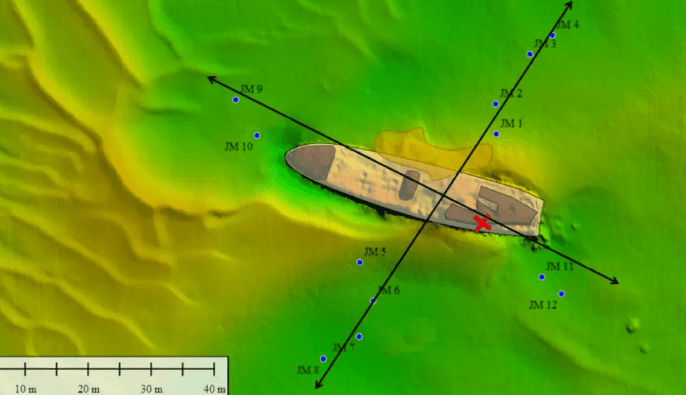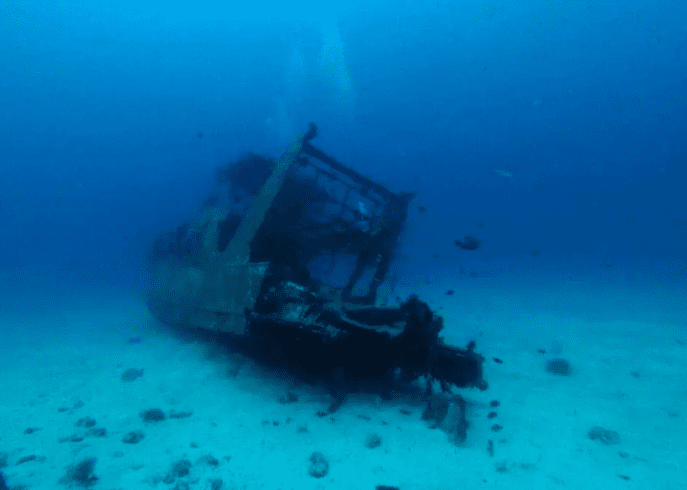The UK Air Force sank the ship after the Nazis had utilized it. Then issue was then one with the ocean whereas today…
The microbiology and geochemistry of the ocean floor are being affected by hazardous waste that is currently oozing from an 80-year-old shipwreck in the North Sea that was sunk by a bomb during World War II. The researchers speculate that this may be a justification for the removal of this ship and other wrecks from the seafloor.
The V-1302 German fishing trawler John Mahn was later employed as a patrol boat by the Nazis. In 1942, the ship was bombed and sunk by the British Royal Air Force. The ship has reportedly been spewing harmful contaminants into the ocean for the better part of a century while sitting 30 meters below sea level in the Belgian North Sea.

An unclean shipwreck
Millions of tons of ammunition, including shells and bombs, thousands of ship and aircraft wrecks, and warfare chemicals can all be found on the North Sea’s seafloor. Hazardous materials found in wrecks, such gasoline and explosives, can disrupt the maritime environment. On the precise site of the wreckage, there isn’t much information, though.
“The general public is often quite interested in shipwrecks because of their historical value, but the potential environmental impact of these wrecks is often overlooked,” Josefien Van Landuyt, study author, said in a statement. “They can be dangerous, human-made objects which were unintentionally introduced into a natural environment.”
Van Landuyt and her colleagues looked at how the V-1302 John is impacting the microbiome and geochemistry in its surrounding seabed. They took steel hull and sediment samples from and around the vessel, at an increasing distance from it and in different directions, and then analyzed the bio and geochemistry around the wreck.
Heavy metals (including nickel and copper), polycyclic aromatic hydrocarbons (PAH), substances naturally present in crude oil and gasoline, arsenic, and explosive compounds were all discovered in various amounts. The sample that was closest to the ship’s coal bunker had the greatest metal contents.
The researchers claimed that these concentrations had an effect on the local microbial population. The samples with the highest quantities of pollutants contained Rhodobacteraceae and Chromatiaceae, which are known to breakdown PAHs. Hull samples contained sulfate-reducing bacteria (like Desulfobulbia), which most likely corroded the hull.
“Although we don’t see these old shipwrecks, and many of us don’t know where they are, they can still be polluting our marine ecosystem,” said Van Landuyt. “In fact, their advancing age might increase the environmental risk due to corrosion, which is opening up previously enclosed spaces. As such, their environmental impact is still evolving.”
According to Van Landuyt, the study is simply the tip of the iceberg. To more fully comprehend the overall impact on the North Sea, a wider sample of shipwrecks in diverse areas would need to be taken. For the time being, we are aware that shipwrecks are more problematic than we had anticipated and that further research is necessary.


